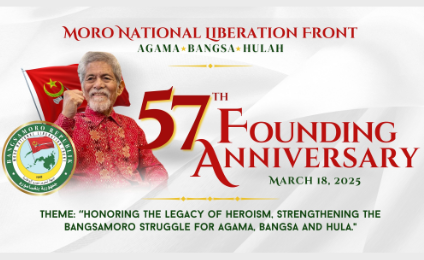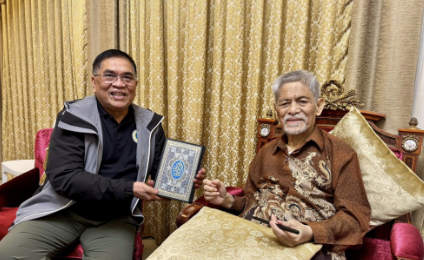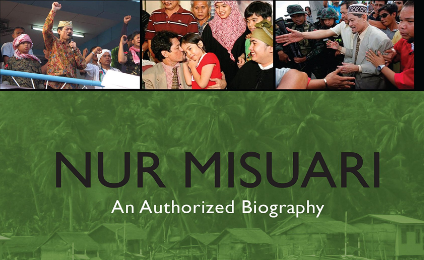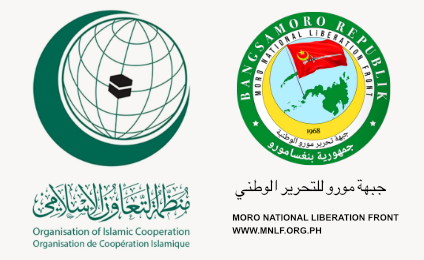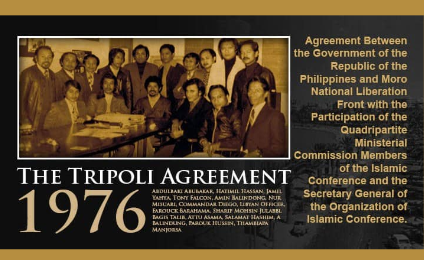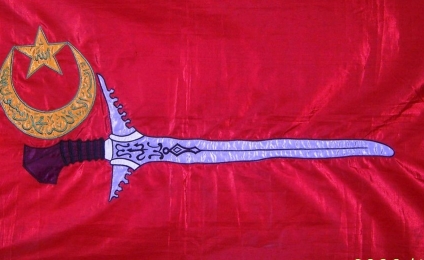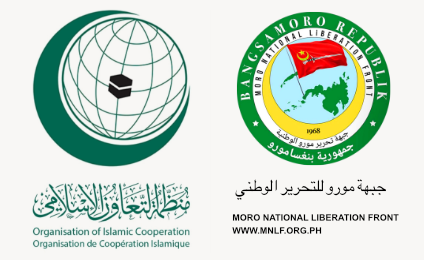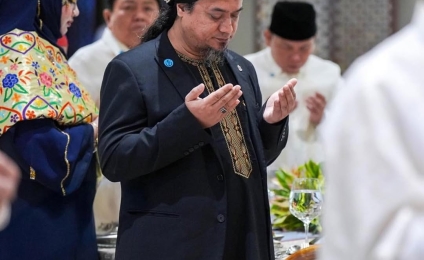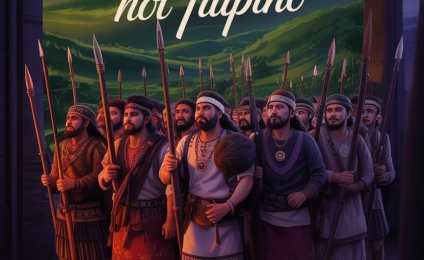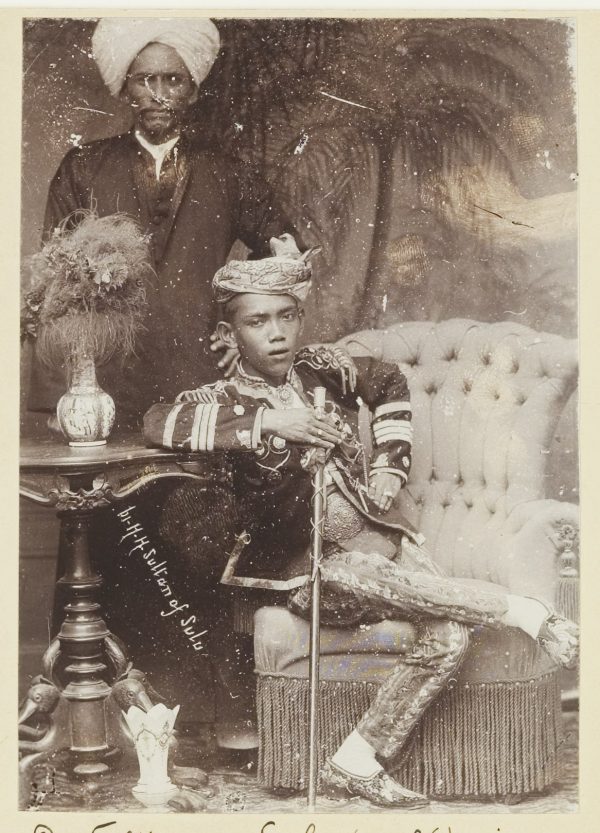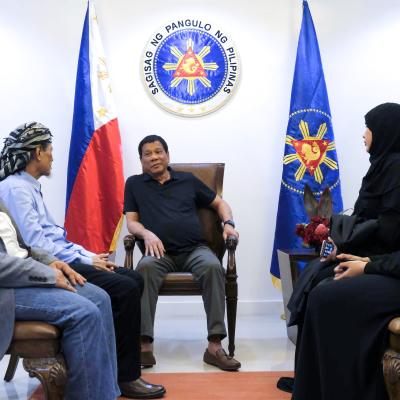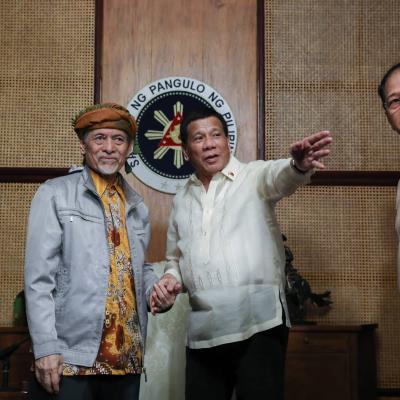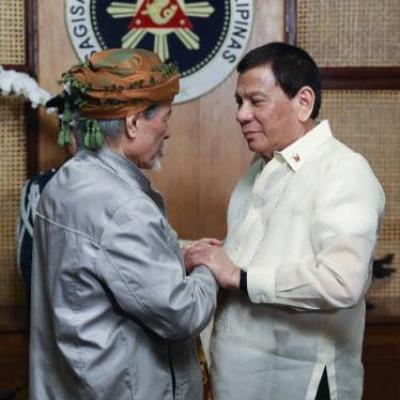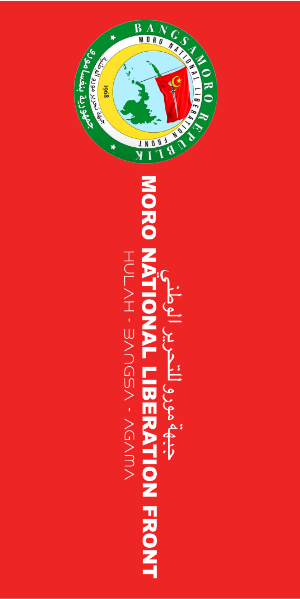The Sulu Genealogy clearly states that the sultanate was established after the missionary activities of a certain Karim ul-Makhdum, followed a few years by the arrival of Rajah Baguinda who was accompanied by courtiers who were presumably Muslims. Judging by their names, most of the Sulu chiefs and leaders who were to accept Rajah Baguinda as their ruler must have been Muslims. In brief, the establishment of the sultanate was based on the consent given to it by a generally Islamized people. Thus when the “tarsila” says that the first Sultan “established a religion for Sulu” and that the people accepted the new religion and declared their faith in it,” it only means that their political structure was now based on Islam and not that the first Sultan originally introduced the faith.
What follows is a list of all the sultans who are believed to have ruled in Sulu with some of their most salient characteristics as revealed by the khutbahs. (In Islam, a khutbah is a sermon or oration delivered during congregational prayers. All khutbahs must include prayers for the Prophet, and it was customary to include prayers for his Companions including the first four khalifs as well as the reigning Muslim ruler. In Sulu, there are certain specially prepared khutbahs which are often repeated on special occasions. All are written in Arabic. Besides prayers for each of the sultans who are believed to have ruled, these contain brief descriptions of their character or achievements).
The Sulu Sultans
-
Sultan Sharif ul-Hashim. This is the title assumed by the first Sultan whose proper name was, according to the Sulu Genealogy, Abu Bakr. His titles as inscribed in his tomb are: Paduka Mahasari Maulana al-Sultan Sharif ul-Hashim. Clearly non-Islamic, the first title was found among Sulu rulers as early as the first quarter of the fifteenth century as reported in the Ming Annals. The term “maulana” (Arabic for protector) is used in the sense of a respected teacher or learned man. The Sharif is reported to have lived about thirty years in Buansa, the first seat of the sultanate, and his tomb is located in one of the slopes of nearby Mount Tumantangis. The khutbahs describe him as wise, intelligent, learned in fiqh (jurispudence), master of his age and time and “kindled light of Allah.” It is speculated that he began his reign in 1450 and died around 1480.
-
Sultan Kamal ud-Din. The Sulu Genealogy states that he was a son of the Sharif ul-Hashim and that he succeeded his father as sultan. The khutbas characterized him as having been kind, considerate and full of pity. An unmarked tomb near that of his father is pointed to as his.
-
Sultan Ala ud-Din. The Sulu Genealogy suggests that he was a brother of Kama ud-Din. The khutbahs characterized him as having been kind, generous, and having governed along Islamic principles.
-
Sultan Amir ul-Umara. This title is evidently the Arabic translation of Maharajah-di-rajah found as the fourth sultan in some tarsilas. The Sulu Genealogy did not mention him. What the khutbahs say is that ha was a champion of the Islamic faith, a ruler of large territories, and a leader with many followers.
-
Sultan Mu-izz ul-Mutawadi-in. He is the Maharajah Upo of the Sulu Genealogy. “Upo” was a princely title. The Sulu Genealogy specifically states that he succeeded to the sultanate upon the death of Kamal ud-Din. The khutbahs described him as a helper of the poor, to whom Allah had given strength to rule.
-
Sultan Nasir ud-Din I. He was surnamed Digunung or Habud, suggesting that he grew up in or ruled from the interior of Sulu. He is not mentioned in the Sulu Genealogy. The khutbahs call him generous, firm, powerful, victorious.
-
Sultan Muhammad ul-Halim. His other name was Pangiran Buddiman which was the name by which he was probably known in life. The Sulu Genealogy states that Pangiran Buddiman succeeded to the sultanate upon the death of Maharajah Upo. The khutbahs claim that he was crafty, wise in matters both temporal and spiritual. Saleeby identified Pangiran Buddiman with Rajah Iro (or Ylo), Pangiran of Brunei, who in 1578 fought Spanish troops when the latter attacked Brunei.
-
Sultan Batara Shah Tengah. This again is a title. “Batara” was a title used by Sulu rulers as early as the beginning of the fifteenth century, and Brunei annals always referred to Sulu rulers by this term. The khutbahs informed us that this Sultan was intelligent, had knowledge of the Shariah (Holy Law), was honored by the community, and had a fondness for cleanliness. It is claimed that Batara Shah Tengah had ruled at least between 1596 to 1608.
-
Sultan Muwallil Wasit. He was known to Spaniards as Rajah Bongsu. One of his daughters married Sultan Qudarat of Maguindanao; while another daughter married Balatamay (Baratamay), the ruler of Buayan in 1657. Around 1650, his son Pangiran Bachtiar (Bactial) took over the affairs of the sultanate. The rule of Rajah Bongsu is established to have taken place from around 1610 to 1650. The khutbahs characterized him as having been noble and knowledgeable in affairs of state, and note that he had a long and glorious reign. He had fought hard and long against the white men on land and sea.
-
Sultan Nasir ud-Din II. He reigned during the lifetime of Rajah Bongsu. There is evidence that one of Rajah Bongsu’s warrior sons, Pangiran Sarikula (Salicala) who gave a great deal of trouble to the Spaniards, once tried to get the throne for himself after one of his father’s defeat by the Spaniards. Spanish authorities agreed that Sarikula did act as a sultan, for sometime at least, during his father’s lifetime. Combes, a Spanish priest and writer, remarked that on the death of Pangiran Sarikula, he throne reverted to his father, Rajah Bongsu. Sarikula died around 1648. His rule may have been sometime from 1645 to 1648. The khutbahs consider him to have been kind, ascetic and victorious in land and sea.
-
Sultan Salah ud-Din Bakhtiar. He was known to Spanish authorities as Pangiran Bactial and to Dutch officials as Pangiran Batticale. After his death, he was called Marhum Karamat. He contested his father’s rule after the death of Pangiran Sarikula. By virtue of his father’s old age as well as the number of his followers, he did in effect become sultan around 1650, if not a year earlier. He was certainly alive on March 15, 1666 as evidenced by his letter to Dutch officials in Batavia. The khutbahs call him just and ascetic and as one having fought Spaniards, infidels, wrong doers and enemies of religion ― a veritable protector of Islam and Muslims. Since tradition states that he had a long rule, it may be fair to estimate that he governed from 1650 to 1680.
-
Sultan Ali Shah. He is not mentioned in the Sulu Genealogy but khutbahs list him. The Sulu Ramadan Oration calls him ever victorious, great and superior sultan, the sultan of the land and sea, specifying furthermore that his heir is Shahab ud-Din (No. 15). However, other khutbahs give the information that his reign was quite short and peaceful. He is characterized to have been unselfish and not having used his office for personal gain.
-
Sultan Nur ul-Azam. The Sulu Genealogy and the Sulu Ramadan Oration do not mention her, but her name is found in Dalrymple’s list with a few details. The omission of her name might be due to her having been a female. Dalrymple, who incidentally did not call her by her sultana title but as Pangyan Ampay (since she was a Sulu royal princess) or Sitti Kabil (Arabic, Sitti Kabira, meaning grand mistress), wrote that she ruled for four or five years. Also that she was a daughter of a sister of Salah ud-Din who had married the Buayan Datu Balatamay. Nur ul-Azam married an Iranun Datu. The Patikul khutbah briefly and revealingly states that she “did not like proud people.” Apparently, some Sulus did not look with favor on her regime, it being under a woman.
-
Sultan Al Haqunu Ibn Wali ul-Ahad. This name is found in the Patikul khutbah and at least one other known tarsila but not in the Sulu Genealogy, the Sulu Ramadan Oration, or Dalrymple’s list. Since “Ibn Wali ul-Ahad” is Arabic for “son of the rajah muda (heir apparent),” it probably refers to a pretender who must have had some following. To be speculated is that he could have been the son of Sarikula (who was once the Rajah Muda to Rajah Bongsu) and who as early as 1666 became the Rajah Bendahara and helped govern the realm with his cousin Sultan Salah ud-Din.
-
Sultan Shahab ud-Din. He was the son of Salah ud-Din. Whereas the Sulu Genealogy puts him as an immediate successor to his father, the Sulu Ramadan Oration has him as the heir and successor to Ali Shah. According to Dalrymple, Shahab ud-Din was quite young when his cousin Sitti Kabira reigned. There is a reference to Shahab ud-Din to the effect that he had begun to collect tribute from the North Borneo territories as early as 1105 A.H. (1693 C.E.). It was he who killed Sultan Kahar ud-Din Kuda of Maguindanao in 1702 and “ceded” Palawan to the Spanish government in 1705. The khutbahs agree in the information that he was well versed in both the Shariah and fiqh. He reigned from around 1685 to 1710.
-
Sultan Mustafa Shafi ud-Din. A younger brother of Shahab ud-Din he was also known as Juhan Pahalawan. Khutbahs consider him as one knowledgeable in the law, a good judge, and considerate. It appears that instead of holding on to his post till he died, he abdicated in favor of his younger brother Badar ud-Din to avoid future dynastic troubles.
-
Sultan Badar ud-Din I. A younger brother of the two previous sultans, he was known to different Spanish authors as “Bigotillos” or “Barbillas,” or as “el Rey Viejo de Tawi-Tawi.” According to Dalrymple, Sultan Badar ud-Din I’s mother was a Tirun lady from the North East coast of Borneo. His reign must have begun around 1718 or 1719 since a letter of his to Dutch officials in Batavia written in 1719 gives the impression that he had just ascended the throne. In 1732, a nephew (or grand nephew) contested his rule which led to his retirement to Tawi-Tawi where he was then known as Sultan Dungun. He died around 1740 in Dungun during the reign of his son Azim ud-Din I.
-
Sultan Nasar ud-Din. He was either a son or grandson (by a daughter) of Shahab ud-Din and was known to the Spaniards as Datu Sabdula (Arabic, Abdullah). In 1731, he challenged the rule of Badar ud-Din , forcing the latter to take leave and retire to Tawi-Tawi in 1732. The intrigues of Badar ud-Din led to the proclamation of Azim ud-Din (a son of Badar ud-Din) as sultan in 1735. After a series of desultory skirmishes between the factions of Nasar ud-Din and Azim ud-Din, the former left for Maimbung where he generally remained till he died around 1735. He was also referred to as Dipatuan. The khutbahs describe him as one who was gentle and always in consultation with the people. He reigned sometime between 1732 and 1735, although it must be noted that even after 1735 he must have had some following, enabling him to attempt at various times to regain the throne, though quite unsuccessfully.
-
Sultan Azim ud-Din I. He was known to the Spaniards and many Sulus as Alimuddin. His mother was reported to have been a Bugis lady from Soopeng, Celebes, and that before becoming sultan, his name was Datu Lagasan. His father Badar ud-Din proclaimed him ruler in Tawi-Tawi in 1735. In 1736,after a few intrigues had paved the way, a number of datus asked Azim ud-Din to transfer his court from Dungun to Bauang (Jolo). But a political struggle in 1748 forced him to leave Jolo for Basilan and then Zamboanga. His younger brother, Datu Bantilan, was then proclaimed sultan. In the meantime, he went to Manila where he remained for sometime, including a few years of imprisonment. He returned an old man to Jolo in 1764. In the same year, on June 8, he was formally reinstated to the throne. In 1774, tired of affairs of state, he formally handed over the affairs of state to hisson Muhammad Israil. After his return from Manila, he was referred to by the khalifal title “Amir –ul-Muhminin.” One of his seals carries the date 1148 A.H. (1735 C.E.), his claimed date as sultan. The khutbahs call him kind, learned, just, wise, the seeker of Allah’s justice and obedient to His will. These also stated that he had “left the country but with the help of Allah, he was able to return well.” The two periods of his reign are 1735-1748 and 1764-1774.
-
Sultan Muizz ud-Din. He was known to Spanish officials and priests as Datu or Pangiran Bantilan. He was a younger brother of Azim ud-Din. His seal bears the date of 1161 A.H. (1748 C.E.), the year his brother left the kingdom to go eventually to Manila. The khutbahs characterized him as patient, truthful, and a disbeliever of ill reports about others. The Patikul khutbah, probably to further distinguish him from his older brother who had gone to Manila, specifically report that he “was patient and never left the country.” Muizz ud-Din reigned from 1748 to about the middle of 1763.
-
Sultan Muhammad Israil. He was one of the sons of Azim ud-Din I who, according to Saleeby, abdicated his power to his son in November 1773. But he must have formally assumed the reign early the next year since his seal carries the year 1188 A.H. (1774 C.E.). He was believed to have been poisoned by either the partisans of his cousin or the cousin, himself, Azim ud-Din (a son of Muizz ud-Din), in 1778. The khutbahs attribute to him popularity, patience, peacefulness, and success. He reigned from the beginning of 1774 to 1778.
-
Sultan Azim ud-Din II. He was a son of Muizz ud-Din and, for some time, governed Sulu with his brother after the death of their father around the middle of 1763. By the end of that year, ha had become, for all practical purposes, the Sultan. With the arrival of his uncle Azim ud-Din I from Manila in 1764, whom he received well, Azim ud-Din II left his his followers for Parang. In 1778, he succeeded Muhammad Israil. He reigned up to his death in 1791. The khutbahs state that he was peaceful, polite, powerful, and a helper of the poor. Passing over his brief rule from the end of 1763 to June 1764, Azim ud-Din II ruled from 1778 to 1791.
-
Sultan Sharaf ud-Din. He was another son of Azim ud-Din I and lived a venerable old age. He came to the throne in 1791 as evidenced by his seal which bears the date 1206 A.H. He died in 1808, although ten years earlier the Spaniards were expecting him to die anytime and were thus worried that a successor antagonistic to them might ascend the throne. The khutbahs report that he knew a great deal of religion, loved the poor and afflicted, that he was merciful, that he closely watch the actions of the datus and kept close contact with the people.
-
Sultan Azim ud-Din III. He was a son of Sharaf ud-Din and died the same year as his father. According to a report, he reigned only for forty days and this confirmed by a cryptic remark in the Patikul khutbah calling him “Sayyid ul-‘Asr,” that is, master of [some] days. Spanish authorities agree with the khutbahs that he was a very good and fine person. He ruled and died in 1808, probably from the smallpox epidemic that raged fiercely in Jolo that year.
-
Sultan Ali ud-Din. He was a younger brother of Azim ud-Din III who occupied the throne in the absence of the rajah muda in Jolo. This rajah muda was a son of Azim ud-Din II and was called Datu Bantilan. Failing to dislodge Ali ud-Din, Datu Bantilan retired to Parang where ha was for some time called “sultan”. Ali ud-Din reigned at least up to August, 1821, as evidenced by one of his letters to an English Captain. The khutbahs assert that he was a stern ruler, that he governed according to the Qur’an, and that he was great and victorious. He ruled from 1808 to 1821.
-
Sultan Shakirullah. He was a brother of Ali ud-Din and was popularly known as Datu Sakilan. He started his rule at the end of 1821. His coins bear the year 1237 A.H. He died in 1823, and a Sulu report says that he ruled only for two years. The khutbahs claim that he was an uncompromising monotheist, learned in Islam, very pious, a helper of the poor, and that he was always in close touch with the people.
-
Sultan Jamal ul-Kiram I. He was a son of Azim ud-Din III, and his seal bears the year 1239 A.H. (1823 C.E.) which can be assumed to have been the year he started his reign. He died in 1842. The khutbahs inform that he was kind, wise, a good administrator, beloved by the people, that he encouraged learning, and that he desiredto be a haji but Allah designed otherwise. The facts demonstrate that he was a good merchant.
-
Sultan Muhammad Fadl. He was a son of Jamal ul-Kiram I and was popularly known as Pulalun. He must have ascended the throne in 1842 since his seal carries the year 1285 A.H. He died on September 24, 1862. The khutbahs state that he was just, that he was a good governor, that he was brave, that he was a fighter of the white men though he was forced to retire to the interior, and that he was careful of all his actions to avoid wronging his subjects.
-
Sultan Jamal ul-Azam. He was a son of Muhammad Fadl and he ascended the throne in 1862. His seal carries the year 1279 A.H. He died on April 7, 1881. He was known to the Spaniards and Sulus as Jamalul Alam. The khutbahs assert that he was well known (probably in the sense that he had dealings with various European powers), that he fought the white men, that he helped orphans, that he aided the ulama financially, and that he introduced the hadd law concerning theft.
-
Sultan Badar ud-Din II. He was a son of Jamal ul-Azam and became sultan in 1881. He died a relatively young man on February 22, 1884. All the khutbahs seen by the author (Dr. Majul) were finalized not later than the reign of this sultan; consequently no information can be given about those characteristics about him that were considered admirable or significant to the Sulus. However, a kitab gives the information that he was kind and perform the hajj.
-
Sultan Harun al-Rashid. He was a descendant of Azim ud-Din I, through Datu Putong, a son. Spanish intrigues led to his proclamation as sultan by a few datus in 1886, although earlier in 1884, Amirul Kiram, a younger brother of Badar ud-Din II, had already been proclaimed sultan. On September 24, 1886, Harun ar-Rashid went to Manila where he was sworn in as sultan before the highest Spanish officials. He never really had the support of the majority of the Sulus who generally Amirul Kiram as sultan especially when the latter was able to overthrow Datu Ali ud-Din, a pretender to the throne. When it became apparent that he no longer served any purpose to Spanish officials, Harun ar-Rashid was persuaded to abdicate in 1894. This was a tacit admission on the part of Spanish authorities that Amirul Kiram was the real sultan of Sulu. Harun ar-Rashid retired to Palawan where he died in April 1899.
-
Sultan Jamal ul-Kiram II. He was a younger brother of Badar ud-Din II. He was proclaimed sultan by his followers in 1884, not long after the death of his older brother. While rajah muda, he was called Amirul Kiram. His proclaimation as sultan wa contested by datu Ali ud-Din, a grandson of Sultan Shakirullah, but to no avail. Ali ud-Din was forced to flee to Basilan. It was Harun ar-Rashid who tried to mediate between Amirul Kiram and Ali ud-Din until the Spaniards thought it expedient to have Harun ar-Rashid to sultan himself. The Spaniards were led eventually to deal with Jamal ul-Kiram II as the sultan of Sulu in spite of his repeated refusal to go to Manila on a state visit. Jamal ul-Kiram II died on June 7, 1936. He can be considered to have been sultan from 1884 to 1936, despite the fact that in 1915, he virtually surrendered his political powers to the United States government under the so-called Carpenter’s Agreement.



 – Awarded for his role in promoting peace and dialogue in the Southern Philippines, particularly in the Mindanao conflict1_small.png)
